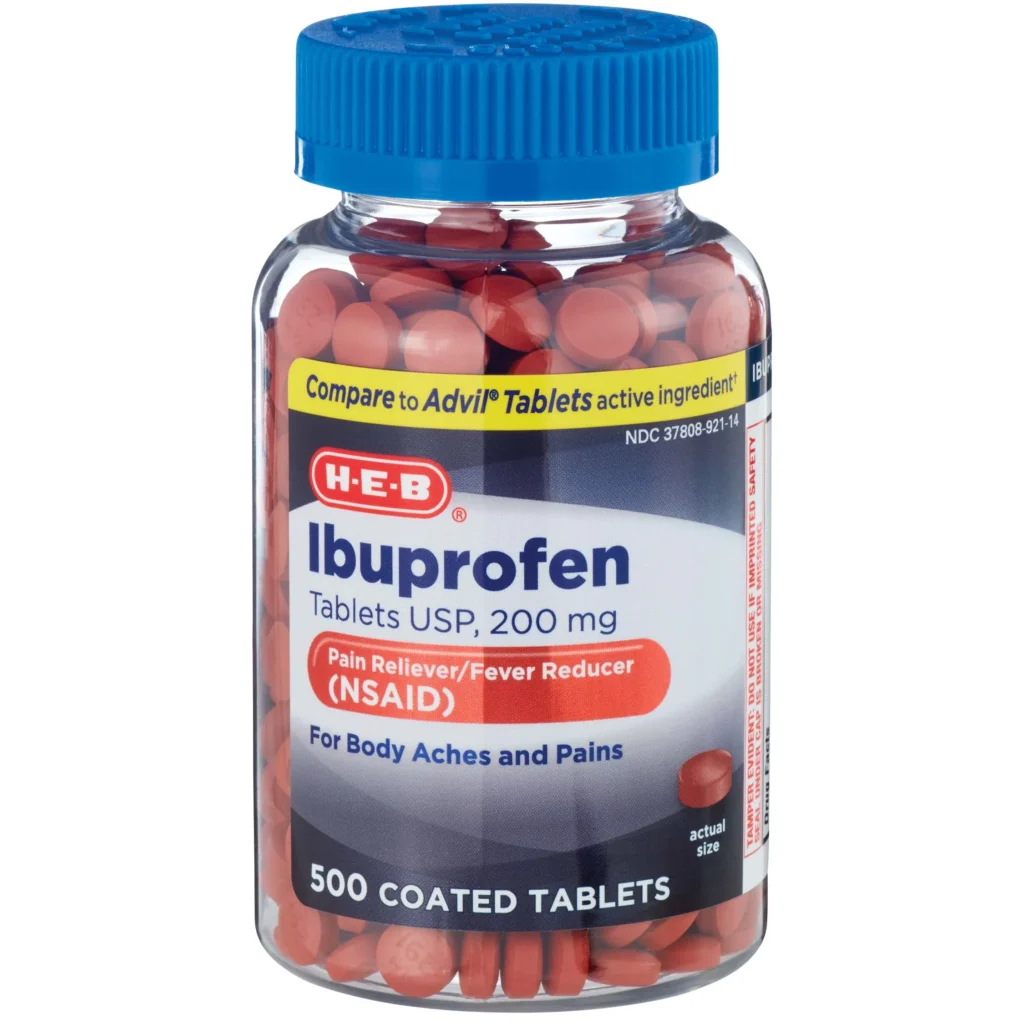✅ Prescription / Indication:
Ibuprofen 200 mg tablets are non-prescription (OTC) in many countries but may require a prescription for long-term use or higher doses.
Used for the:
- Relief of mild to moderate pain (e.g., headache, toothache, menstrual cramps, backache, muscle aches)
- Reduction of fever
- Treatment of inflammation in conditions like arthritis, bursitis, or sprains
📄 Description:
- Active ingredient: Ibuprofen
- Dosage form: Oral tablet
- Strength: 200 mg per tablet
- Pharmacological class: NSAID (Non-Steroidal Anti-Inflammatory Drug)
- Mechanism of Action: Inhibits cyclooxygenase (COX-1 and COX-2), which blocks prostaglandin synthesis—leading to reduced inflammation, pain, and fever.
🌟 Advantages:
- Rapid pain relief (within 30–60 minutes)
- Reduces inflammation and swelling
- Generally well-tolerated at low doses
- Available without prescription in many countries
- Versatile use for fever, pain, and minor injuries
🔬 Nature:
- Therapeutic class: Analgesic, antipyretic, and anti-inflammatory
- Drug type: NSAID
- Action: Symptomatic relief, not curative
📦 Common Package:
- Blister packs or bottles
- Common pack sizes: 10, 20, 30, or 100 tablets
- May be film-coated for easier swallowing and to reduce gastric irritation
🧊 Storage Conditions:
- Store at room temperature: 20°C to 25°C (68°F to 77°F)
- Keep in original packaging
- Protect from moisture and heat
- Keep out of reach of children
👨⚕️ Patient Advice / Precautions:
✅ Do:
- Take with food or milk to reduce stomach upset
- Use the lowest effective dose for the shortest duration
- Follow dosing instructions carefully
- Stay hydrated
❌ Avoid:
- Taking more than 1200 mg/day (OTC) without medical advice
- Using with alcohol (increases risk of stomach bleeding)
- Using alongside other NSAIDs (e.g., aspirin, naproxen)
- Using in late pregnancy (especially third trimester)
- If you have asthma, ulcers, kidney disease, or heart problems, consult your doctor first
🚨 Seek Medical Attention If:
- You experience stomach pain, black stools, vomiting blood
- You notice allergic reactions (rash, swelling, breathing difficulty)
- Pain or fever persists beyond 3–5 days

